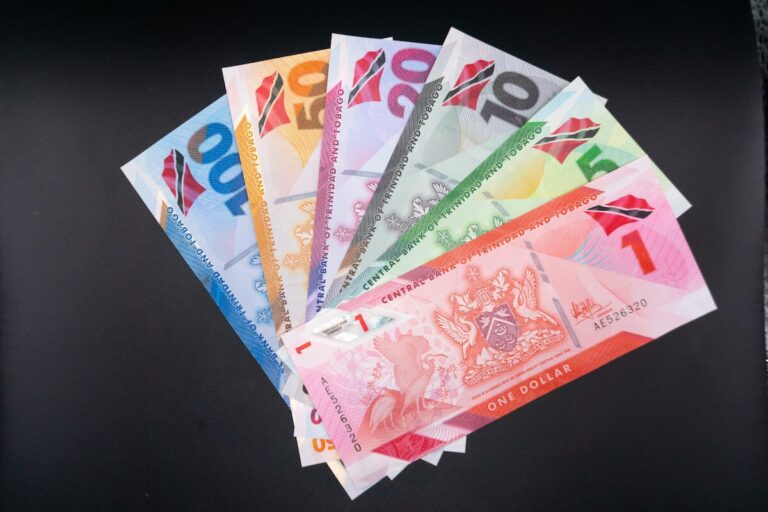When visiting or learning about Trinidad and Tobago, one of the foundational pieces of knowledge you’ll need is an understanding of its currency. Many travelers, entrepreneurs, and curious individuals often ask about how money works in this vibrant twin-island nation. This guide will answer all your questions and ensure you feel confident and informed about dealing with Trinidad and Tobago’s currency.
What Is the Currency of Trinidad and Tobago?
The official currency of Trinidad and Tobago is the Trinidad and Tobago Dollar, commonly abbreviated as TTD or “TT$.” The dollar is further divided into 100 cents. Trinidad and Tobago is one of the Caribbean nations that issues its own currency, unique to its local economy and culture.
Denominations of Trinidad and Tobago’s Currency
Trinidad and Tobago’s dollar is available in both paper banknotes and coins. Here’s a quick breakdown:
Banknotes:
- $1 TT Dollar
- $5 TT Dollar
- $10 TT Dollar
- $20 TT Dollar
- $50 TT Dollar
- $100 TT Dollar
These notes feature vibrant colors, unique illustrations, and prominent cultural symbols such as flora, fauna, and historical figures.
Coins:
- 1 cent
- 5 cents
- 10 cents
- 25 cents
- 50 cents (less common)
- $1 Dollar Coin
Coins are widely used for small transactions such as buying snacks or tipping.
Exchange Rate and Value
The value of the Trinidad and Tobago Dollar fluctuates based on international currency trade and its economy. While the United States Dollar (USD) is the most commonly exchanged foreign currency in Trinidad and Tobago, the typical exchange rate averages around 1 USD = 6.8–7 TT$. This can vary slightly based on where you exchange your money (banks, exchange services, or airport kiosks).
Keep an eye on recent exchange rates to get the best value for your money, especially if you’re traveling to or from the country. Currency converter tools can be helpful to check updated rates anytime.
How to Use Currency in Trinidad and Tobago
Understanding how and when to use the local currency can make your experience more seamless. Below are essential tips for handling Trinidad and Tobago’s currency:
Cash vs. Card Payments
- Cash is still king for small, everyday transactions such as markets, street food vendors, or taxi rides.
- Credit and debit cards are widely accepted in hotels, restaurants, and larger retailers. Visa and Mastercard are the most commonly used.
Consider carrying both types of payment methods for flexibility. Always check whether the establishment accepts cards to avoid surprises.
ATMs in Trinidad and Tobago
- ATMs are prevalent in large cities like Port of Spain or San Fernando.
- Many ATMs accept international debit and credit cards, though you may incur foreign transaction fees.
- It’s advisable to withdraw during the day from a secure, reputable bank for safety.
Interesting Facts About the Trinidad and Tobago Dollar
- Secure Polymer Banknotes:
Recently, Trinidad and Tobago replaced paper-based $100 TT notes with durable polymer ones. This adds enhanced security features to combat counterfeiting.
- Cultural Reflections:
Each banknote design represents a significant aspect of Trinidad and Tobago’s heritage, from indigenous birds to the Independence Arch.
- Regional Collaboration:
While TT$ is specific to Trinidad and Tobago, its economic interaction with CARICOM countries creates opportunities for cross-border trade and banking.
FAQs About Trinidad Currency
1. Can I Use US Dollars in Trinidad and Tobago?
Yes, US Dollars are occasionally accepted in tourist-heavy areas like hotels or major restaurants. However, it’s always best to use TT Dollars for convenience and better pricing.
2. How Can I Exchange Foreign Currency for TT Dollars?
Currency exchange is available at banks, authorized exchange services, and the airport. Banks typically offer the best rates, although smaller bureaus may provide competitive options.
3. Is It Expensive to Travel in Trinidad and Tobago?
Trinidad and Tobago offers a mix of cost experiences. Local food or public transportation is very affordable, but imported goods or luxury services can be relatively expensive. Using the local currency can help you manage expenses efficiently.
4. Are Traveler’s Checks Still Accepted?
Traveler’s checks are rarely used anymore. Carry cash or a card instead for convenience.
5. What Should I Do With Leftover Currency?
If you have leftover TT Dollars after your trip, exchange them back to your home currency before leaving the country. Foreign exchange for TTD is less common outside Trinidad and Tobago.
Where Culture Meets Currency
The Trinidad and Tobago Dollar reflects the vibrancy and history of the nation it represents. Whether you’re purchasing local artwork at a market, savoring the flavors of doubles at a street vendor, or admiring the intricate notes themselves, using TT Dollars is an integral part of immersing yourself in the culture and daily life of this Caribbean gem.
